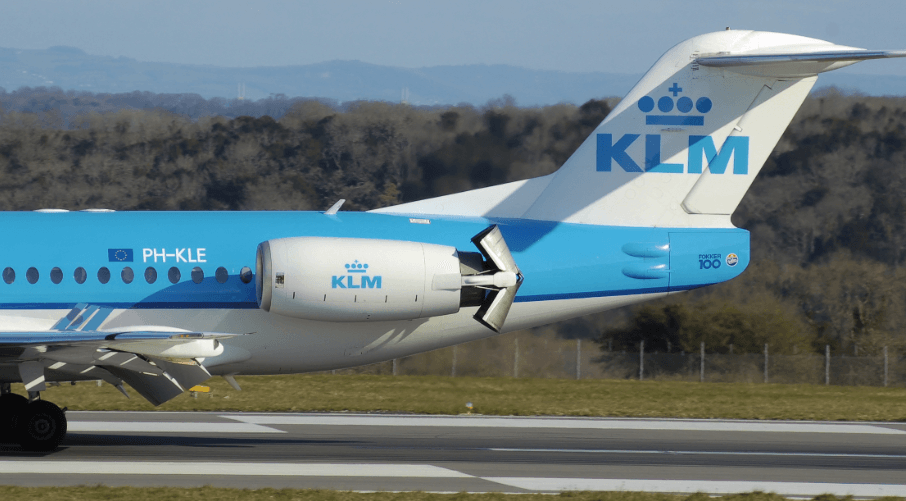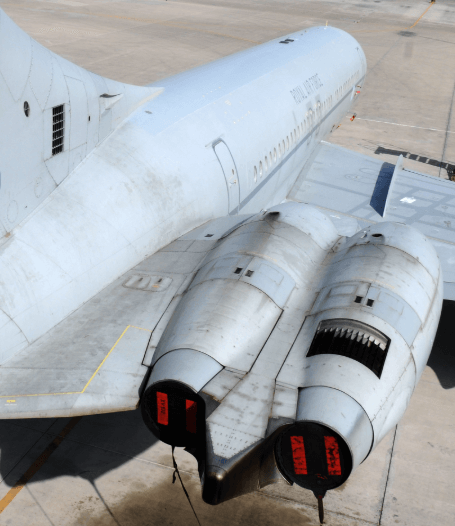233
Points
Questions
68
Answers
24
-
Asked on 20th November 2020 in Propulsion.
All gas turbine engines turbojets, turbofans and turboprops are based on the Brayton thermodynamic cycle.
Turbojet engines are used for the aircraft’s high speed subsonic and supersonic flight. A jet engine takes a mass of air and exhausts it at a higher velocity with the combustion products. A jet engine makes the intake air to exhaust faster from its back end. Jet engine consists of following parts inlet, diffuser, compressor, burner, turbine and the nozzle.
 A schematic diagram of a turbojet engine
A schematic diagram of a turbojet engineAir is inducted through inlet of the engine. After that the speed of airflow is reduced in diffuser to around low subsonic speed of Mach number 0.2. The diffusion process increases the static pressure. After diffuser, the air is passing through the compressor where it get compressed. In compression process, pressure is increased further. It increases the total pressure of the flow.
After compressor, air is passed through combustor. Here, fuel is injected and there is a burning at a constant pressure. After the combustor, hot gas is flowing through the turbine, where expansion takes place and pressure get decreased. Turbine is connected to the compressor through a shaft. Turbine drives the compressor through this shaft.
After turbine, flow passes through the nozzle, where pressure is further decreased, and the flow exists from the engine. If the turbojet engine is designed for a subsonic flight, exit velocity of flow is subsonic or at large sonic. For supersonic aircraft, the exhaust velocity of the flow is supersonic.
- 1191 views
- 1 answers
- 0 votes
-
Asked on 19th August 2020 in Flight mechanics.
A swept wing is a wing that has an angle backward or forward. Most of the initial aircraft had a straight wing. There are many advantages of swept wing over a straight wing. By sweeping of wing, a wing sees an effectively smaller value of airflow velocity or Mach number. By sweeping the wings of a subsonic aircraft the drag divergence is delayed.
 Swept wing with normal and tangential stream velocity components
Swept wing with normal and tangential stream velocity componentsIf \Lambda is the sweep angle of the swept wing than critical Mach number for an airfoil is less than actual critical Mach number for a swept wing which is less than critical Mach number for an airfoil/\cos\Lambda. Wing sweep increases the critical Mach number of the airfoil. However, wing sweep reduces the lift. There is a decrease in the coefficient of lift.
For a supersonic aircraft in a supersonic flight, wing sweep decreases the wave drag. A thin wing with a large angle of sweepback has the smallest wave drag.
- 1350 views
- 1 answers
- 0 votes
-
Asked on 10th August 2020 in Propulsion.
Thrust reversal is used to reverse thrust by the diversion of the aircraft’s engine thrust to provide a break or deceleration. Thrust reversal system is used to slow down the aircraft after touch down to make landing distances shorter. In bed weather brakes of the landing gear is not so effective so a thrust reversal system is needed to be more safer.
Types of thrust reversal systems:
In a jet engine aircraft, thrust reversal is done by using thrust reversing systems. These are target type thrust reversal, clam-shell type, and cold stream type thrust reversal. Target type thrust reversal uses a bucket type doors to reverse the flow of hot air through the engine exhaust. In a clam-shell type thrust reversal system, the normal exit of the engine is closed and ducts are opened to provide thrust directed forward. This system only affects fan airflow and it does not affect the main engine line. This type of thrust reversal is mainly used in turbofan engines.
 Target type thrust reversal system
Target type thrust reversal system Cam-shell type thrust reversal system
Cam-shell type thrust reversal systemThe other type of thrust reversal system is of cold-stream type. These are used in high by-pass turbofan engines. Here air from the bypass duct is redirected by using blocker doors to produce a reverse thrust. This redirects exhaust air from both the fan and the engine core.
In a propeller-driven aircraft reverse thrust can be obtained by using a controllable-pitch propeller which can change the angle of the propeller blades.
- 1475 views
- 1 answers
- 0 votes
-
Asked on 30th July 2020 in Propulsion.
A turbojet is a type of an air-breathing jet engine. It consists of an inlet, compressor, combustion chamber, and turbine. Air from inlet is passed through the compressor where it is compressed, and then passed through the combustion chamber where it is heated. The flow is expanded through the turbine. Turbojets are highly efficient for supersonic aircraft. Turbojet engines were used in Concorde supersonic airplane, and other aircraft which fly supersonically. Turbojets are also used in cruise missiles. The efficiency of gas turbines can be increased by increasing the overall pressure ratio, higher-temperature compressor materials, and increasing the turbine entry temperature. A turbine engine has a smaller diameter which gives an advantage of size consideration. Turbojet engine has a lower specific weight that is the weight of the engine per unit of thrust produced.
- 1335 views
- 1 answers
- 0 votes





